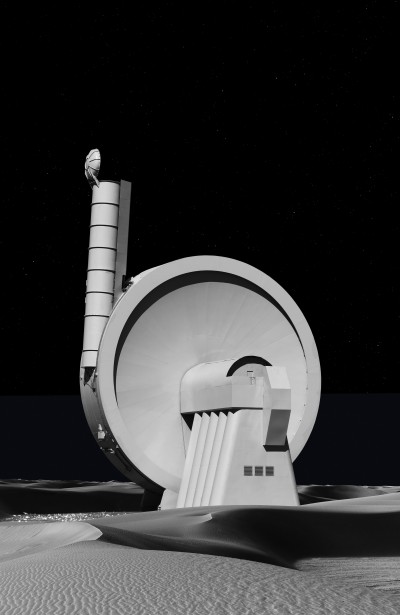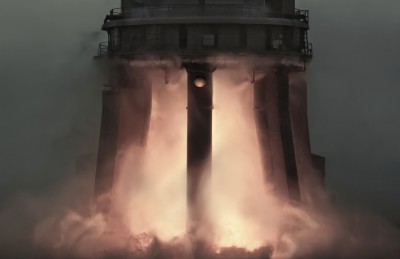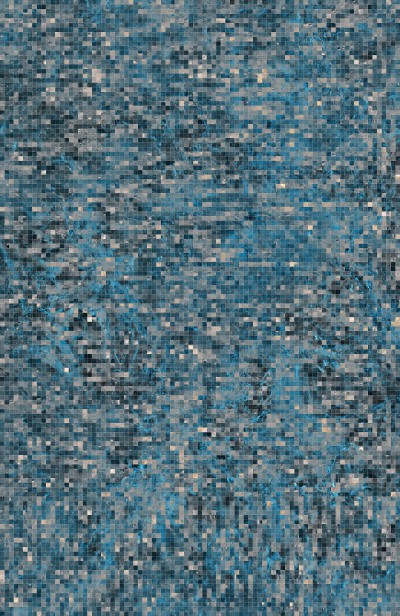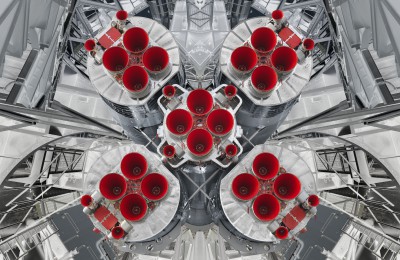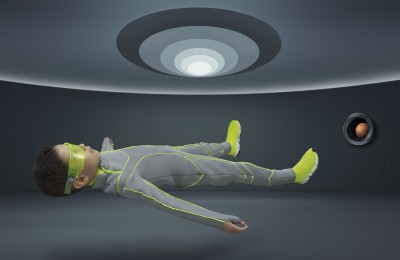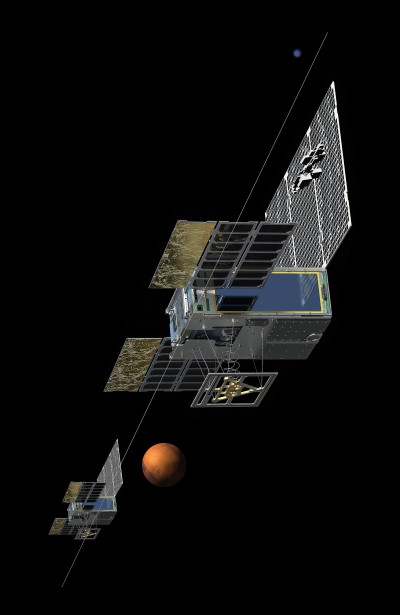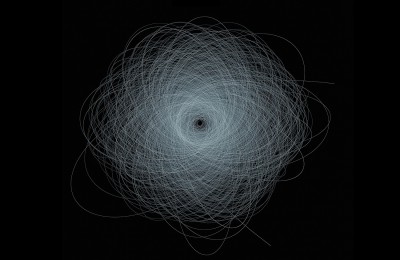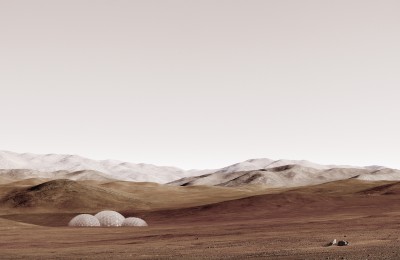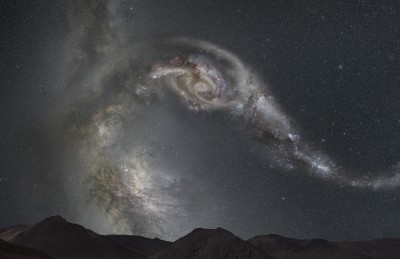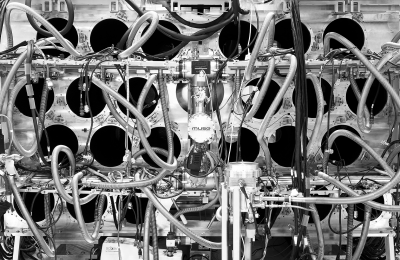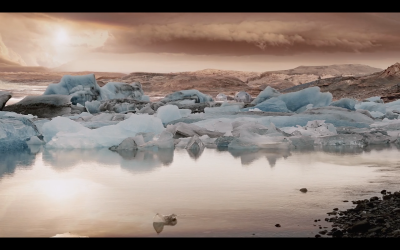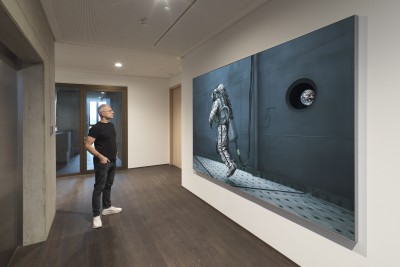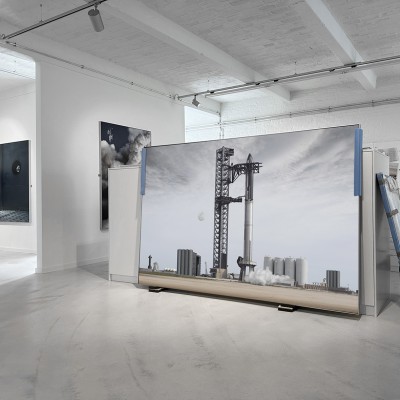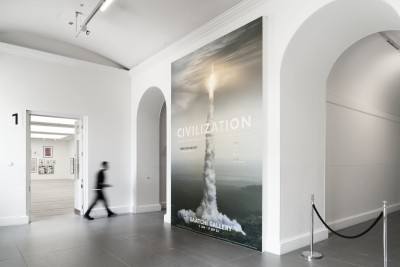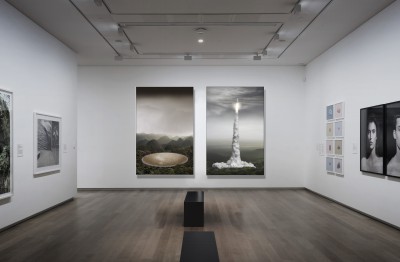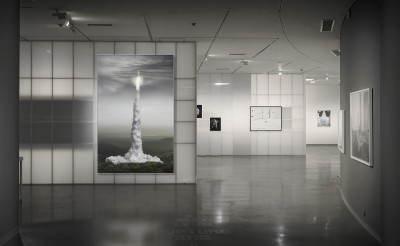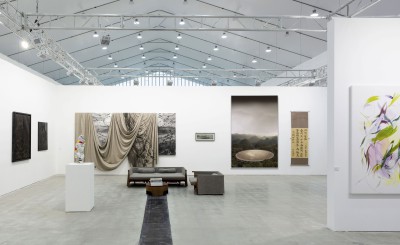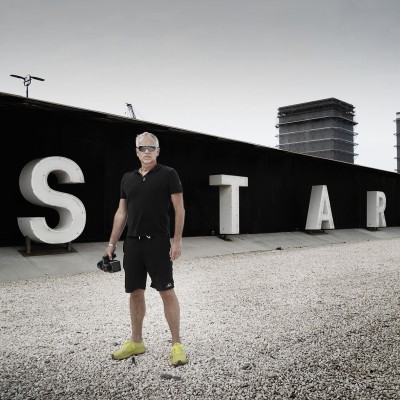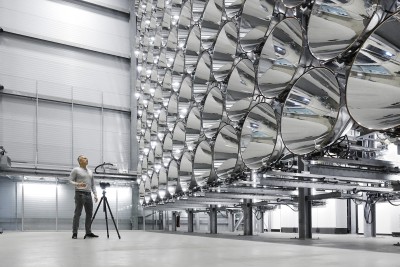
starship tranquility
Format 1: 132 x 202 cm / 52 x 79.5 in, edition of 6 + 2 AP
Format 2: 67 x 102 cm / 26.3 x 40.2 in, edition of 6 + 2 AP
Hybrid photography, archival pigment print, aludibond, diasec, custom-made aluminium frame
At the Starbase of SpaceX in Boca Chica, South Texas, the most futuristic spaceport in history is currently being built. The Starship being constructed there is the largest rocket and spacecraft system ever developed by humans. The fully reusable spacecraft architecture was conceived by Elon Musk to transport an unprecedented number of astronauts, satellites, and cargo to space, the Moon, and eventually to Mars. The rocket system consists of two main components: the Super Heavy first stage and the Starship upper stage. The combined height of both components is 120 m, with a diameter of 9 m. The Starship boasts an impressive payload capacity, capable of carrying up to 100 tonnes of cargo into orbit. However, its most important feature is reusability. Both the Super Heavy first stage and the Starship itself are designed to return to Earth and be used again after each mission. The innovative Mechazilla Tower, equipped with its gripping arms, assembles the booster and spacecraft for launch and catches both components in mid-air upon their return to Earth, placing them back directly on the launch stand.
The artwork "starship tranquility" depicts the Starship rocket system on the launch pad at the Starbase, one day before the historic first flight attempt of the Starship launch system in April 2023. At the center of the triangular composition is the ensemble of the launch tower, booster rocket, and the Starship mounted on top, flanked by staggered fuel tanks with escaping cryogenic oxygen, slowly cooling down the valves. The expanding cloud of oxygen is the only element in motion within the image. On the left edge of the image, the very first prototype of the spacecraft, the Starhopper, can be seen, while another Starship reaches into the sky in the background. On the right edge of the image, between the tanks, stands a bust of the Roman god Mars, after whom the planet is named. In the image, the figure serves as an allegory for metaphorical parallels between the Roman Empire and the idea of possible Mars colonization, which encompasses notions of technological progress, expansion, and conquest. In the middle axis of the image, at the lower edge, a large "stone sphere" is depicted, representing the very first photograph of Mars taken by the Mariner 4 spacecraft in 1965. In front of it stands a small figure, illustrating the immense scale of the Starship and the bi-planetary future of humanity. Given the impending dramatic launch, the image radiates a sense of tranquility and grandeur.

